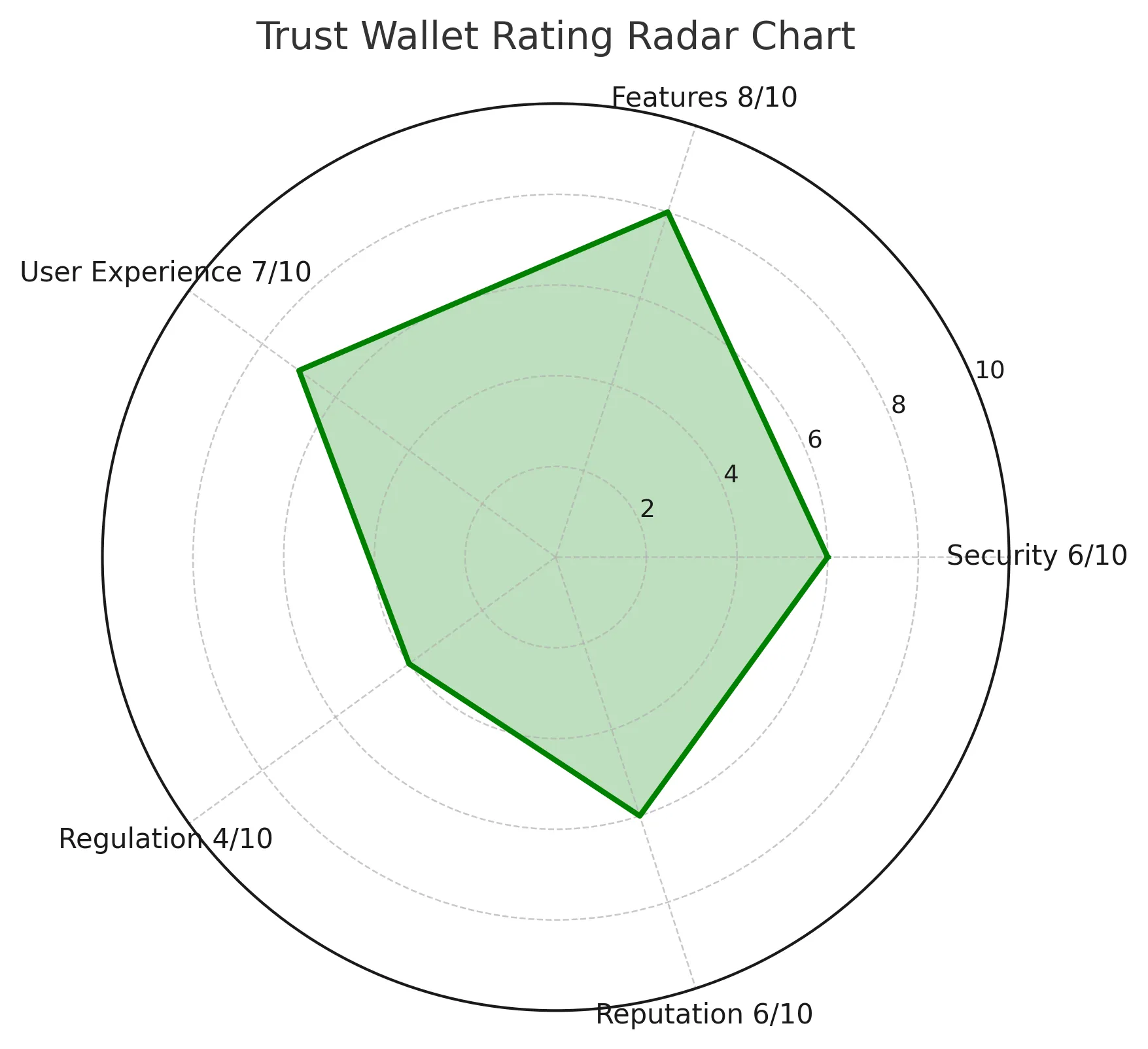 BrokerHiveX
BrokerHiveX BrokerHiveX
BrokerHiveX BrokerHiveX
BrokerHiveXSummary:Is Trust Wallet reliable? This article comprehensively analyzes Trust Wallet (Binance's official wallet), its security, features, user experience, and reputation. It answers questions like "Will Trust Wallet go bankrupt?" and "Is it safe or a scam?" to help you decide whether it's worth using.
1. Brand Background and Development History
Trust Wallet was founded in 2017 and is headquartered in California, USA. It was acquired by Binance in 2018 and became its official decentralized wallet.
User scale : more than 60M+ downloads
Supported assets : covering 70+ blockchains and more than 4 million tokens
Positioning : Emphasis on "decentralized asset management", but the core development team is still highly tied to Binance
Frequently Asked Questions:
Is it really “completely decentralized”?
Do you have full control over your private keys?
Has a security incident occurred?
Multi-chain support : support BTC, ETH, BNB Chain, Polygon and other mainstream public chains
Built-in DApp browser : Direct access to DeFi and NFT markets
Staking function : supports staking of some PoS tokens
Cross-chain exchange : supports built-in Swap and cross-chain exchange, but the handling fee is higher
In terms of user experience, the interface is simple and suitable for beginners, but the functional complexity is slightly lower than that of professional wallets (such as MetaMask).
| Regulation/Compliance | Condition |
|---|---|
| Regulatory agencies | Unregulated and not registered as a financial services institution in any country |
| Owning entity | A development team invested and controlled by Binance Labs |
| Compliance risks | As a "non-custodial wallet", most financial regulations are not applicable, but the risk is entirely borne by the user |
Safety features:
The private key is stored on the local device and not uploaded to the server
No KYC, pay attention to compliance usage scenarios
There have been multiple cases of user funds being phished or misled into DApp transfers.
CoinTelegraph calls it "one of the most mainstream multi-chain wallets," but warns users to be wary of phishing risks.
CryptoSlate points out that its Swap feature has high fees and lacks transparency
Positives : Simple operation and wide asset coverage
Negative :
Customer support is almost non-existent
The private key is lost and cannot be retrieved
There have been some DApp access fraud cases, resulting in user asset losses
Decentralization ≠ risk-free : private keys are completely kept by users and cannot be recovered if lost
Risk of counterfeit applications : There have been a large number of fake Trust Wallet apps.
Lack of supervision : Fund security depends entirely on the user's own protection
As Binance's official wallet, Trust Wallet undoubtedly boasts advantages in terms of traffic and ecosystem support. However, its "no regulation and heavy reliance on user self-protection" model also requires users to have a strong sense of risk.
Suitable for: users who want to use DeFi, NFT and are familiar with private key management
Not suitable for: beginners, users who need customer service and regulatory guarantees
Security: 6/10 — Private keys are managed by the user, but the risk is entirely borne by the user
Functionality: 8/10 — Comprehensive multi-chain support, suitable for DeFi users
User Experience: 7/10 — User-friendly interface, but lacking customer service
Compliance: 4/10 — No regulatory filings
User reputation: 6/10 — Many positive reviews, but also a lot of thefts
Official website: https://trustwallet.com
Email: [email protected]
Community: Twitter, Telegram, Reddit
Trust Wallet is a comprehensive wallet, but it is not "absolutely secure" and users are responsible for their private keys and risks.

BrokerHivex is a financial media platform that displays information sourced from the public internet or uploaded by users. BrokerHivex does not endorse any trading platform or instrument. We are not responsible for any trading disputes or losses arising from the use of this information. Please note that the information displayed on the platform may be delayed, and users should independently verify its accuracy.